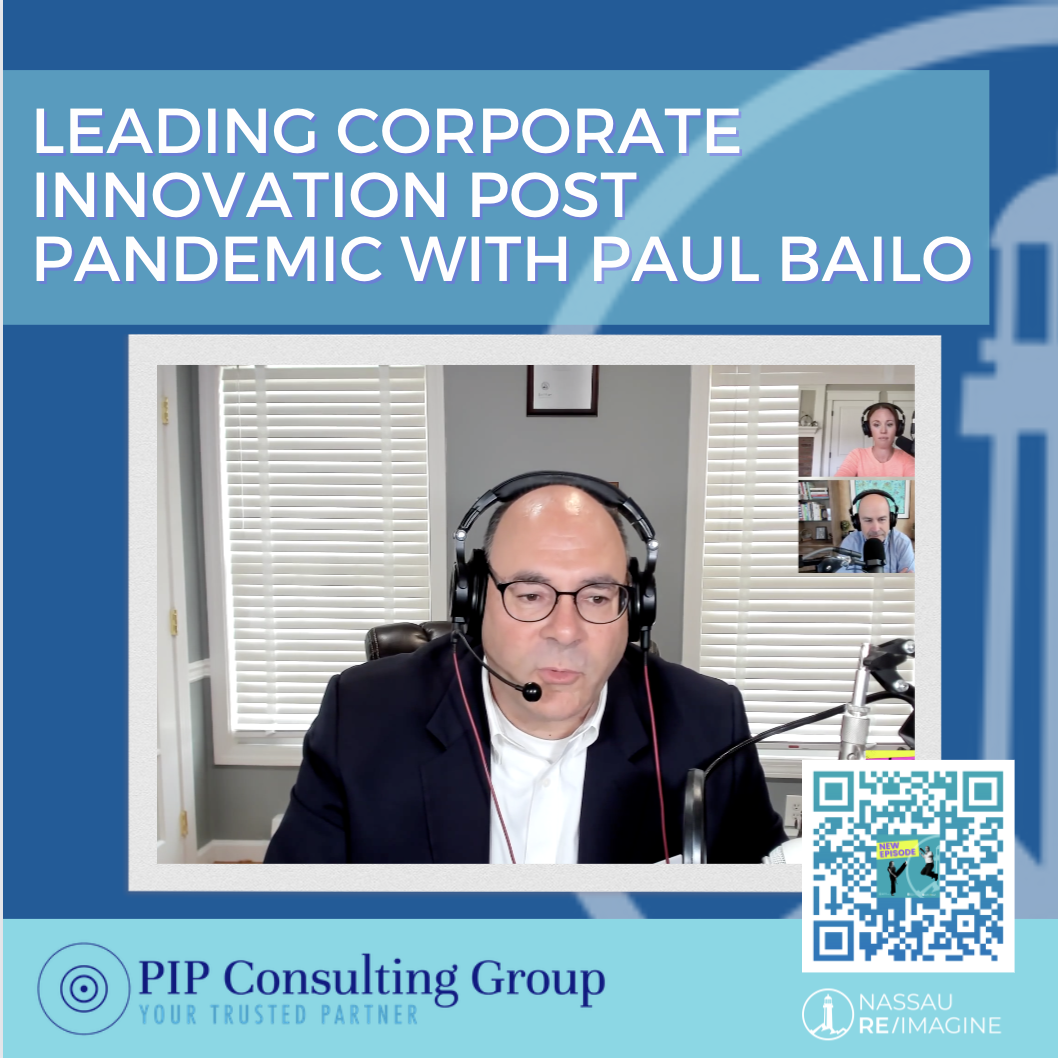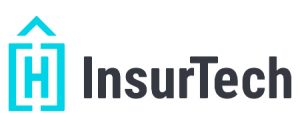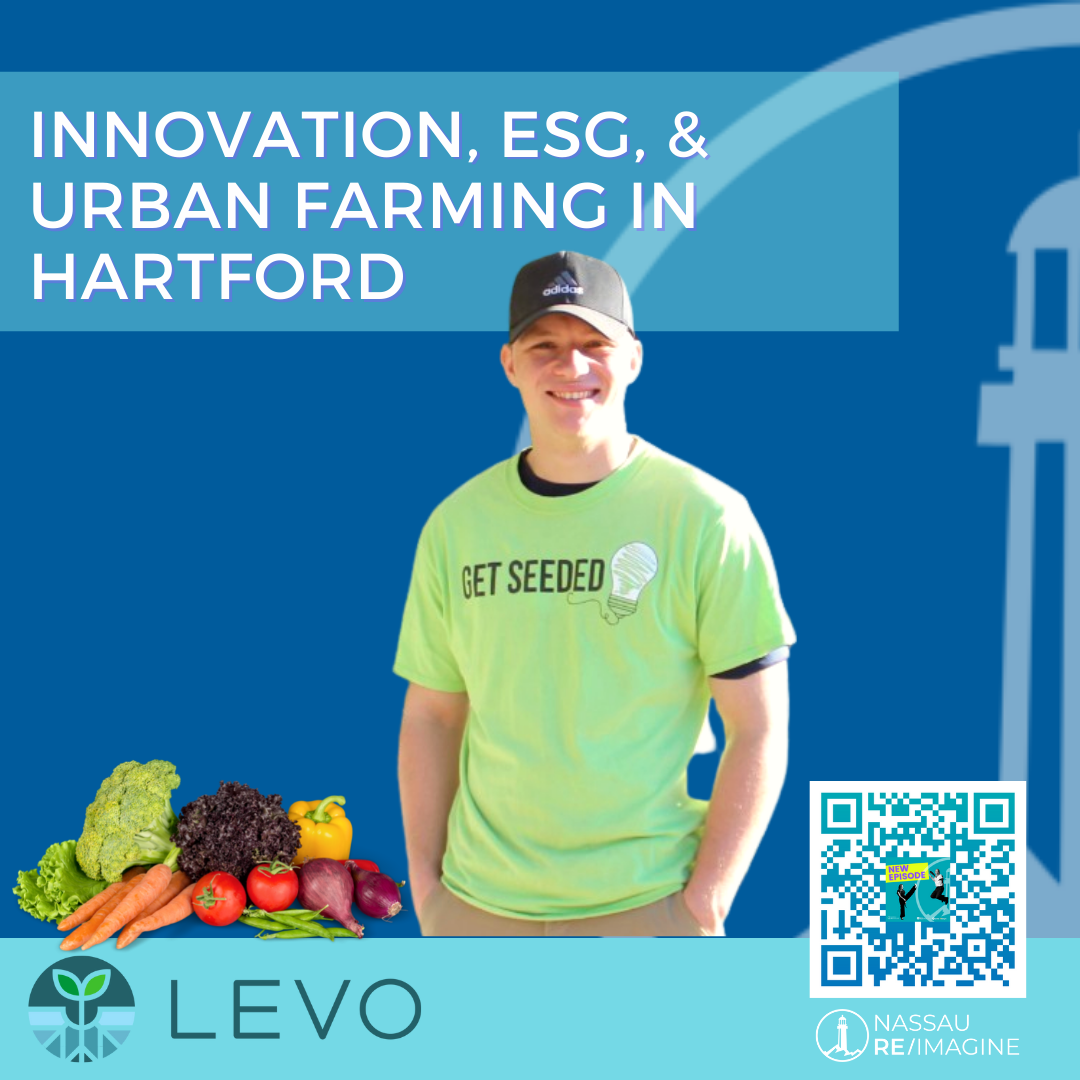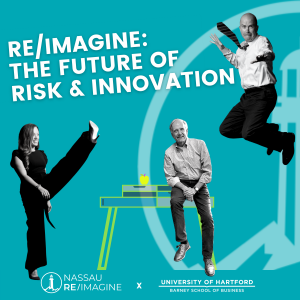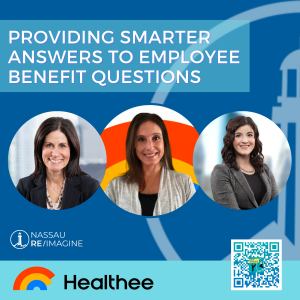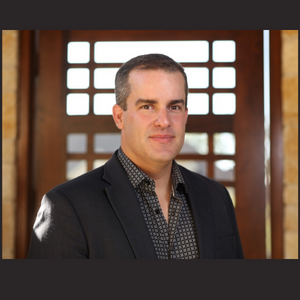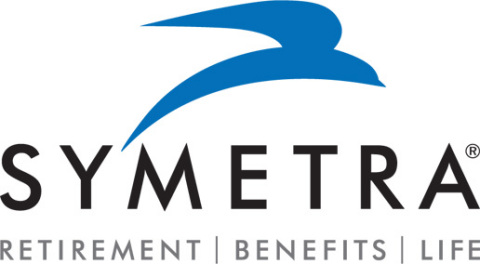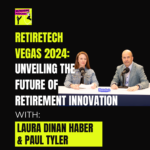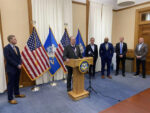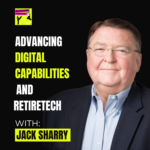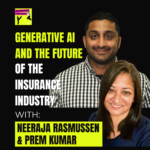00:00:01:09 – 00:00:20:13
Paul Tyler
Hi. This is Paul Tyler, and welcome to another episode of the re-imagined podcast. But it actually is a special one and it’s actually unique in that it’s going to be a series, a podcast we’re doing in partnership with Laura. I’ll kick it over to you to talk and introduce our new partner.
00:00:21:02 – 00:00:49:11
Laura Dinan Haber
Sure. And we are happy to have them here today. Today’s conversation, as Paul mentioned, is the first in the Innovation and Risk Podcast series. So we’re producing this in partnership with the University of Hartford, Barney’s School of Business. We have great partners in the Barney School, and Assistant Dean John Thompson is with us and wearing many hats you may recognize him or his voice from previous episodes, but we’ve come together to create educational content that showcases startups, intellectuals and individuals advancing the future of finance.
00:00:49:11 – 00:01:01:02
Laura Dinan Haber
We’re excited about the podcast series, excited about partnering with the Barney School business, the University of Hartford. And now I’ll hand it over to John Thompson to briefly introduce myself and then share with us the guests we have here today.
00:01:02:12 – 00:01:27:00
John Thomson
Great. Well, thanks, Laura. It’s good to be on the podcast with you and Paul again. It’s a great it’s a great vehicle for for for learning and for, you know, addressing, you know, innovations and in in risk and in finance. So anyway, I’m John Thompson, and I’m the assistant dean here in the Barney School. I joined the Barney school three years ago as a practitioner.
00:01:27:10 – 00:01:54:03
John Thomson
I had spent a 35 year career in finance and health care and insurance, and I joined the Barney School here in the as a as a part time teacher and a part time administrator in the in leading the transformation of the Barney School so that I’ll turn it over to Marcus Shimabukuro to introduce himself yeah.
00:01:54:03 – 00:02:29:03
Marcus Schmalbach
Thanks for having me. My name is Marcus. I’m from Berlin, Germany. I’m on two jobs. I’m the CEO of Ryskex, which is a fintech company based in Berlin, but also in New York City. Beside that, I’m a professor for artificial intelligence and blockchain with SFP Business School based in Paris, but also in Berlin. And happy to be here today talking about alternative risk financing it’s great.
00:02:29:03 – 00:02:37:06
John Thomson
And Girik Gnatpole, he’s with us today. Girik is a student a graduate student here at the university. Gary, could you introduce yourself?
00:02:38:02 – 00:02:59:21
Girik Nagpal
Sure thing. Thank you. Professor Thompson. I’m a graduate student. University of Hartford Barney School of Business. Right now, what I’m studying to the door degree program, which entails an MBA and a concentration in accounting and a master of science and business analytics kind of talk about my background. I also did a double major in my undergrad with accounting and risk management and insurance.
00:03:00:06 – 00:03:07:04
Girik Nagpal
So kind of ties in with the role. This the topic is we always talk about finance and risk management and insurance at the same time.
00:03:08:21 – 00:03:09:10
Paul Tyler
Excellent.
00:03:10:23 – 00:03:15:03
John Thomson
Great. Well, Girik. Why don’t you kind of take over and kind of lead our questions?
00:03:16:18 – 00:03:37:08
Girik Nagpal
So I believe because we’re talking about alternative risk finance today, I feel like the first thing that we should kind of jot down is the definition of risk and what we actually mean when we talk about risk, we kind of throw this word around a lot, but it’s really important to see what is actually meant by risk. And then we can move forward into other keywords which entail with this topic today.
00:03:40:11 – 00:04:09:03
John Thomson
I’m really glad you brought up that that distinction, because in the legacy times we used to use the terms insurance and risk almost synonymously or as synonyms and meaning the same thing. And in fact they’re really quite different things risk is basically defined, I think from a textbook standpoint as, as any deviate measured deviation from an expected outcome or event.
00:04:09:23 – 00:04:50:10
John Thomson
There’s two basic types of risk, pure risks and speculative risks. But risk is, is basically that that event is there insurance is a tool for financing risk. It it isn’t the same thing as risk and and it typically finances pure risks which are the downside impacts of of a risk or a risk event. And it’s historically been used as a primary tool for financing risk to transfer from the risk owner which is the company which has the exposures and they can transfer that risk to a third party insurance company.
00:04:50:22 – 00:05:18:19
John Thomson
What’s happened over time is that there’s been this evolution of change of risks and the orientation of risks, and that’s actually starting to change the the risk landscape. So many risks that were previously insurable are no longer insurable. And we’ll talk more about that later. But that’s basically looking at that distinction between risk and insurance and and understanding the differences and how they can still are important.
00:05:18:19 – 00:05:24:02
John Thomson
But they how they interplay and are managed changes is changing significantly.
00:05:25:17 – 00:05:51:05
Girik Nagpal
So given the downturn from what I understand, risk management is probably the bigger question at play, while insurance is only one of the answers to it. And again, we need to kind of open our eyes to more alternative risk financing matters and options as well. Doctor Marcus, in your opinion, though, how do you think that risk management has evolved to respond to this changing understanding of risk to.
00:05:54:23 – 00:06:22:19
Marcus Schmalbach
I guess the risk landscape itself changed a lot. And due to the fact that we have issue that we are living in a digitized, globalized world, the impact is felt globally. Finally, as we may see currently what’s happening in the Ukraine. But you see that all around the world. The impact, I think like that likewise we we saw that with the pandemic, if it would just be in China, would have been an epidemic.
00:06:22:19 – 00:06:53:03
Marcus Schmalbach
But we had a pandemic, a global pandemic for more than two years. And so this is these are risks which can have a really great impact on the balance sheets of companies. And so I guess a completely different two to 50 years of or more likely where the companies are working in silos and maybe in the national area and not in the global linked with each other value chains and supply chains.
00:06:54:04 – 00:07:01:07
Marcus Schmalbach
And so risk is definitely much more on that on the list of a CFO and a CEO when it was ever before yes.
00:07:02:15 – 00:07:20:01
Paul Tyler
Yeah. John, you made a statement, maybe just I’ll double click into that one, which was sometimes risks are insurable and sometimes they shift and they’re not. Maybe you could give us a real example of one where, you know, the dynamics have changed so much that you can’t get insurance for it.
00:07:21:09 – 00:08:03:02
John Thomson
Well, I think there’s there’s a number of examples out there today, one that becomes right too, which is we’re still living through this is the risks associated with a pandemic. It used to be that the you know, it was the events were much simpler and then there weren’t sort of this what Marcus has taught me this actually this perspective of systemic risk and how these risks specifically like the virus risk associated with a pandemic really has a systemic impact on an organization, meaning not only in terms of magnitude but in terms of complexity and figure out how is that actually ultimately impacting the organization.
00:08:03:12 – 00:08:46:03
John Thomson
And, you know, a change has been where there were traditionally in insurance contracts, exclusions for war, for example. But but viruses were never thought of as being something that was excluded and so over time, the insurance industry has had adverse experience from that. And this wound up starting to expand. And most contracts exclude losses related to viruses. And when we have a pandemic like COVID19, which is created by a virus, we have insurance contracts which aren’t designed or intended to respond.
00:08:46:03 – 00:09:15:02
John Thomson
And therefore, that’s an uninsured ball type of a risk or event. Same can be termed, I guess, looking at things like so associated with climate change with with windstorms it used to be with now we have increased frequency and severity of of Atlantic Coast storms coming at us. And and those risks are becoming uninsurable today because of the magnitude and the complexity of those situations.
00:09:15:02 – 00:09:23:08
John Thomson
So there’s another example of a of a risk that’s become uninsurable or only maybe partially insurable now.
00:09:23:08 – 00:09:44:14
Paul Tyler
Well, speaking of winds, I mean I literally had 70 mile an hour winds hit my house last night and lost a chunk of my roof. So it’s happening more and more frequently. And in markets your your scope of risk are you looking at financial risk? Are you looking at health risks? Are you looking at climate risks in your work and the models you’re building.
00:09:48:00 – 00:10:32:16
Marcus Schmalbach
I would say the what we call the top four risks, we are having a closer look on this pandemic terror of war, climate change and cyber. So because we believe that these risks themselves have the hugest impact on the company. And so we are not, let’s say, maybe siloed thinking is a bit rude, but let’s say we are not looking on the food line itself, but more likely, starting from the idea of what is the impact to a company, what could be a real Chapter seven, chapter 11 scenario due to that kind of risks for them and then starting to.
00:10:32:19 – 00:11:03:02
Marcus Schmalbach
Yeah, to find solutions for them to to help them out. Of course, if there’s insurance available let’s buy it. Yeah. Nothing beats a cheap insurance is always said around, but if the insurance comes to an end and there’s no solution on the market available then we jump in and help out and try to create new solutions, alternative solutions for them to cover those risks and cover their balance sheet hmm.
00:11:03:13 – 00:11:24:20
Laura Dinan Haber
So clicking into that one, one level deeper, Marcus, talk to us about what improvements parametric insurance can deliver compared to traditional insurance. are there certain things that stand out and even go one level higher? Do you mind just giving a brief overview on parametric insurance for those who may not have heard it or are less familiar?
00:11:25:06 – 00:12:15:00
Marcus Schmalbach
I frankly, I’m, you know, said parametric insurance. I will talk about that a little later. Why I believe a parametric is not buy 100% insurance solution. So let me try to find the best. OK, let’s let’s start with the traditional insurance. And traditional insurance is based on the law of large numbers and we not normally have an indemnity insurance means I, I have a cover line for let’s say million and my house gets somehow a fire windstorm or whatever and, and I have a claim and then there’s the claim adjustment process and even I cover the million I get maybe by the insurance company 560,000 because this is exactly to rebuild my house so far.
00:12:15:00 – 00:12:40:18
Marcus Schmalbach
So I guess I’m parametric makes it in a bit different way. Parametric says if there’s for example, a windstorm, then this is the trigger event itself. And then you normally at the second trigger and say, the windstorm has been directly in my house and there has been somehow a trigger that has been really occurred that you have a double trigger combination on that.
00:12:41:04 – 00:13:10:19
Marcus Schmalbach
Finally, what parametric solution does not know, let’s say so is a claim adjustment process. This is the major difference between that. So that’s why we do this parametric makes definitely sense when you get hit by something and you need money quick on your banking account. So you you do not have the traditional insurance policy it’s more likely linked with predefined indices and triggers.
00:13:11:06 – 00:13:39:22
Marcus Schmalbach
And if that event occurs, then you get a payout for maybe rebuilding your house or whatever, rebuilding your company a lot of opportunities. So to answer why I said I’m not talking about parametric insurance by 100% there, there are parametric concerns around, but not every single solution, which is parametric in a parametric way created is automatically an insurance.
00:13:40:16 – 00:14:17:15
Marcus Schmalbach
There’s also the the nice effect of parametric is that the capital market understands that because it’s, it’s, it’s if it hit somehow a predefined index or it does not. This is how the financial market is what the more likely you or is right Elizabeth goes the load then I have to pay the other person some money or however and you can adopt that solution the parametric solution to make it attractive for investment banks hedge funds whatever to to yeah to invest in those kind of risks.
00:14:17:15 – 00:14:46:21
Marcus Schmalbach
So from a regulation standpoint parametric must not it must not be an insurance it can be but it must not be an insured. It can also be just the parametric. If we link that to the to the capital market, I would say a risk swap is more likely what also can be in a parametric redesign yeah.
00:14:46:21 – 00:15:15:12
John Thomson
I think it was interesting when I, I, I’ve learned a lot about that from Marcus and one of the things that’s become clear to me is that the the if you’re going to access the capital markets, the alternative capital forms other than insurance, the capital markets have no real understanding or patience with a long 35 page contract that governs whether or not a loss is covered.
00:15:16:13 – 00:15:41:10
John Thomson
They either it happened, the event either happened or it didn’t happen or it happened with an established magnitude that they and they are that’s one. And then number two, it can be independently verified. So there’s really no debate about whether it happened or not. An independent third party can can verify whether it happened or not. And it’s not sort of say, well, maybe the insurance policy will respond.
00:15:41:10 – 00:16:03:04
John Thomson
And and then there’s there’s a significant period of time. The adjustment, as Marcus talked about, that process is very time consuming. And there’s in in in business, you know, time is money. And when someone’s waiting to be paid, their either their business is not getting back in business or they have to find capital to get started to get back in business.
00:16:03:04 – 00:16:22:08
John Thomson
And so it’s important that the two, you know, tools or structures like parametric designs can actually accelerate that reimbursement without a lot of the traditional contractual processes, which are very slow and and cumbersome.
00:16:24:15 – 00:17:02:23
Girik Nagpal
You know, I’d like to kind of go back to the topic of systemic emerging versus you guys definitely answered and hit the right spot when it comes to parametric solutions for deliveries. But like a lot of my work mentions, there’s a pandemic, there’s cyber, there’s climate change. So even if you think about pandemic for one second, if something which is probably low frequency but high severity, so again, the possibility of the frequency might be low, but then again, when something bad like like that hit it’s probably going to be catastrophic and it’s probably going to have a lot of high severity, which is what kind of makes it hard for insurance companies to insure the
00:17:03:00 – 00:17:22:19
Girik Nagpal
risk, which makes it a non insurable risk. Again, even with cyber, which has a lot of relevance even in the pandemic time, because we remember and even right now, everyone, most of the people are still working from home or working remotely. So, you know, when you work from home, not everyone has sophisticated or secured home networks to work through.
00:17:24:01 – 00:17:41:03
Girik Nagpal
So again, that also increases a lot of exposures again and created a lot of risks, which also makes it really hard to cover. Like there are a lot of cyber coverages right now, but to cover it 100%, it’s probably going to be something to think about in the future is probably is probably pretty high right now as well.
00:17:41:23 – 00:18:08:06
Girik Nagpal
Even with climate change. The one thing that I like about Parametric Solutions is that with climate change, some people might believe that climate change is actually something that’s happening. Some people actually don’t believe it’s something that’s happening. But at the same time, because we use the word parametric, that just means that we’re independently verifying something. So again, like you mentioned, Paul, if you had like high winds last night is recorded, it is something that independently verified.
00:18:08:11 – 00:18:24:18
Girik Nagpal
Now, if it ties into the bigger picture of OK, that leads to climate change or it is a cause of climate change, that’s a different discussion altogether. But we can independently verify things which kind of really, I think fast tracked the process of parametric solutions as well.
00:18:28:03 – 00:18:57:01
Paul Tyler
Yeah. And then maybe we could talk a little bit about alternative risks. So those risks that aren’t insurable mm hmm. How do I sort of find coverage? How do I find coverage? I’m a business and I’m a school district. In Maryland, and I don’t want my school. You know, I think what will happen if my school is hacked or I get I’m a victim of ransomware how do I protect myself?
00:18:57:06 – 00:19:12:16
Paul Tyler
You know, now, is this a is this like Gorak, the the 300 mile wind event? I can’t get insurance? Or is it somewhere, somewhere in between you.
00:19:14:01 – 00:19:49:05
John Thomson
Paul? I think that actually Markus could be give us a really good example in terms of the the the sort of his model that Markus and his team have developed that sort of provides a way of of assessing that in terms of giving an independent risk index calculation with respect to the event so that the risk taker can make a decision about the risk and how much they would like to expose themselves to it, much in the same way a traditional underwriter does with an insurance contract.
00:19:50:00 – 00:19:55:00
Paul Tyler
So, Mark, is, can you solve my problem there?
00:19:55:11 – 00:20:18:01
Marcus Schmalbach
But you are right saying there is no insurance. It’s not that easy that you say, oh, no insurance available. So if we find someone with the capital market because they are stupid enough to cover every single thing we offer them. This is this is at the end of the day, of course, not the case. What it’s first of all, nowadays time it’s about big data.
00:20:18:01 – 00:20:43:16
Marcus Schmalbach
Yeah. This is where all these nice publicity interference comes in and where you can model something brand new. And then as Tom already said, you have to find somehow an index which can be hit or not hit because this is the first step to making people outside of the insurance industry getting an understanding what they are investing in.
00:20:44:20 – 00:21:11:17
Marcus Schmalbach
And then, yeah, frankly, it’s a negotiation process. If we talk, for example, the pandemic at Lloyd’s they would tell you a pandemic is a one in a hundred risk means for the underwriter. It happens one. 100. Yes. We had that interesting discussion that even it’s a one in a hundred year risk, it can occur next year again and then for the next 100 years, not anymore.
00:21:11:17 – 00:21:35:04
Marcus Schmalbach
And stuff like that. It does not mean that if it’s a one in a hundred that it can just hit us once a lifetime and we are now free from every pandemic. So this is more likely the major problem of calculating risk like that. And here you have to bring in new models and define new ways of of of treating us which which occur.
00:21:35:12 – 00:22:07:05
Marcus Schmalbach
And then you see what the appetite of the capital market is. If they say, yeah, I cover it for 10% and the company will see policyholders happy with 10% paying against the pandemic because they said, oh, well, 10% is even better than losing 100, then you have a deal more likely if they are saying, well, we do it for 25%, and the company says, Oh no, OK, this is much fine, then you have another opportunity and maybe you define different, tweak us or lower the sum or stuff like that.
00:22:07:13 – 00:22:32:15
Marcus Schmalbach
So to be honest, we are still in these kind of shoes where it’s it’s a tailor made state every single time and not that scalable opportunity, which we are of course seeking for, to say, OK, now we have one single solution which works perfectly for your elementary school, you mentioned or whatever advice, and we can say, OK, this works for every 100 other schools based in Michigan and whatever.
00:22:33:10 – 00:23:14:00
Marcus Schmalbach
And then you have to group the scale up and say, Yeah, this is at the moment it’s really still a tailor made thing. And then negotiation with, with two counterparts. Sometimes I think a company seeking for transfer and risk and the capital market, this may be an interest and an appetite on that because they say, well, it works perfectly with my portfolio because for example, I bet that Brant oil gets up in price and so I’m happy to, to cover something around Europe at the moment because yeah, I have this is more likely a hedging opportunity for me.
00:23:14:12 – 00:23:32:09
Marcus Schmalbach
So frankly, it needs a little different mindset to traditional insurance at the moment. The challenge for every company within Parametric is making it scalable and active for for companies to invest in investment.
00:23:34:00 – 00:24:01:00
John Thomson
Marcus. I like the ones that the kinder kinder shoes I thought I was pretty good because that does pretty much define sort of when you talk about this, people would say a risk would happen and it’s a 11 and 101 in a hundred year event. And if we go back 15 years now, plus to Hurricane Rita and Katrina in New Orleans, both of those events were separate events.
00:24:01:14 – 00:24:33:01
John Thomson
Both of them were actually one in a hundred year events, but they occurred within the same month or two months period, very close. So in the kind of the traditional thinking of when someone would a one in a hundred year event would occur, they the kind of the naive or kinder shoe belief would be, oh, I’m, I’m, I’m clear. I the risk has happened and I’m good for another 99 years before it will happen again.
00:24:33:09 – 00:25:07:06
John Thomson
And we’ve proven now quite in many many examples that a one in a hundred year event can happen multiple times within one year. And it’s just a matter of we’ve got to change this world. We live in. And Marcus has developed this index around what we call VUCA, you know, volatility, uncertainty complexity and ambiguity. And those are factors which really define a very complex risk world in which we find ourselves.
00:25:07:06 – 00:25:21:01
John Thomson
And that’s a way of sort of better categorizing a risk versus the saying is it’s frequency. It really gets focus is more on the sort of the severity and don’t take comfort in the fact that it’s a one in a hundred year event.
00:25:22:13 – 00:25:39:06
Paul Tyler
So VUCA, I love that. I love that. That’s a good word. Oh, Mark, Mark, tell us, how is technology whatever role does technology play in in calculating an index like that and how does that translate into to actual risk markets?
00:25:40:16 – 00:26:06:19
Marcus Schmalbach
Yet, to be honest, if you bring something new to the markets, it must be somehow linked to the blockchain or artificial intelligence thing. Otherwise the people would not believe it’s something new and needed. I so in this particular case, we we use some machine learning things to to grade that about risk index is now close to 80 and it’s more likely programed that way.
00:26:06:19 – 00:26:33:16
Marcus Schmalbach
It is if it was 80% then it’s time to call it unmasked and ask him to take him with you tomorrow because 100% could never you know that then the world is over and frankly, just one more sentence and then I will answer on the tech thing. We, if I go three years back in time I didn’t believe that there will be a war around Europe.
00:26:33:16 – 00:26:58:08
Marcus Schmalbach
I would not believe that there’s a pandemic happening and I’m a believer that the climate change is good for him. We we can discuss if it’s human driven or not human driven, but at the end of the day, we are we are in that situation. OK, so and now another funny thing also, it’s not really funny, but let’s talk about the cyber war thing, which is another thing.
00:26:59:02 – 00:27:24:13
Marcus Schmalbach
I read a lot of articles that the insurers currently say that due to the fact there’s the Ukraine crisis and there are some Russian hackers around that they will not cover any data breach or hacking attack or whatever because they argue that it’s war and terrorism times. And this is in the context. Yeah. Paul, you make I understand that.
00:27:24:13 – 00:27:57:23
Marcus Schmalbach
But as we talk about tech right now, the reason is they are they are more likely. It will be interesting how the judges will what their results will be. But you cannot and this is the fun fact, you cannot say that it’s not done by a Russian hacker. If you get hacked by someone with a proxy server which is on Cayman Island and whatever, you cannot outline where the hacking attack started if it started in Ukraine and Russia, in Caymans, in the US, whatever.
00:27:58:05 – 00:28:16:17
Marcus Schmalbach
So if they’re somewhere why in the world you can always say, OK, was a hacking attack driven by the Russians, for example, means this is another impact for cyber. And so now I’m talking for 2 minutes and you realize that we have war, climate change cyber thing, which does not really works out and the pandemic is still not over.
00:28:17:07 – 00:28:50:21
Marcus Schmalbach
So yeah, this is really a hard impact to the world at the end of the day. And so this is where the tech comes in because for a human or even some human it would be may hard to get all these informations linked. So what you need is a bunch of big data and bringing together and you need some smart data science to, to create somehow an algorithm who brings all these these aspects of the world within within one single algorithm.
00:28:51:06 – 00:29:14:06
Marcus Schmalbach
And then you have to pay trust because no one if someone tells you that you or her shows you the code of a machine learning algorithm, it’s impossible. You have to trust the machine where we are looking every Monday. What what the machine is telling us. But we do not understand what’s happening in the black box. This is why it’s artificial intelligence and not human driven.
00:29:14:16 – 00:29:37:08
Marcus Schmalbach
And so this is another thing some people believe in and say, OK, yeah, why not? It’s tech no more has that more likely given. But of course, there are many people out there who say, OK, I will not ever trust the machine. I want to understand it myself. Why is the book about index now? 75 and why is the premium now 3.4% and not just 1%?
00:29:37:08 – 00:30:01:18
Marcus Schmalbach
If it’s a one in a hundred risk and this is a very interesting thing coming up with this tech and this machine learning added, I guess it will still take some time because the decision makers in the companies, either in the insurance companies or in the financial markets companies or the Fortune companies, they still have their issues in paying trust to artificial intelligence.
00:30:01:18 – 00:30:09:12
Marcus Schmalbach
Or if we talk about artificial intelligence. 98%, we mean machine learning yeah.
00:30:09:19 – 00:30:49:09
Paul Tyler
Girik, John, I’m sure you watched the Super Bowl Marcus scene. What was that, Laura? You told me she downloaded one of those Sports Doodle apps and started making some crazy bets on like what color Gatorade was going to be poured on a certain coach’s head, at what point in a game. It feels to me like, you know, is there is this kind of the future of risk management, you know, where you just happened to see it on the consumer side, it will this ever is this any kind of model, do you think, for the commercial insurance sector you know is insuring this like long risk is will we ever reduce
00:30:49:09 – 00:30:51:18
Paul Tyler
it to, you know, clicking a button on an app?
00:30:52:21 – 00:31:14:11
John Thomson
Well, I think Paul the interesting part is, is that we’ve moved from a world and risk management where when tough times, when things were simpler, when we could sort of live in a world of of sort of basic risk management and basic compliance risk. And we sort of would, you know, look at things from loss minimization and so forth.
00:31:14:11 – 00:31:42:15
John Thomson
And risk management in its infancy was more of what akin to insurance management because that was pretty much the the risk financing tool that was used to manage most, if not all risk or at least all identified risks. But we’ve kind of found ourselves when we rapidly move forward and what we’ve been through. Yes, there’s been a lot of incredible changes that Marcus outlined in the past, you know, 36 months.
00:31:42:15 – 00:32:25:21
John Thomson
But if we go back to 2008 where the with the fight with the financial crisis and the impact of that type of event and then you know, we go back even further to what happened to it with in 2001 with the the World Trade Center and that sort of event that terrorism event. We’ve come through some very turbulent and very catastrophic type of events in the past 20 years that have have necessitated us to take a different approach and risk management has had to elevate it to a much higher level where risk management was done by that insurance manager who was in the basement and is now has to be risk has to be managed
00:32:25:21 – 00:32:58:00
John Thomson
in the C-suite and at the board of directors tables. And because of the impact that risk can have on an or on an organization, particularly on its balance sheet and the assets on its balance sheet. So it requires a lot more involvement, engagement, more sophistication using new technology to help map out the future or understand the roadmap in terms of where we are and how do we protect the assets that our organization has that belong to our shareholders?
00:32:58:00 – 00:33:36:13
John Thomson
And what happens if they’re not insured? It could be catastrophic and that takes this whole new having this culture of risk and risk management where it’s everyone’s job all the way from the boardroom down to the mailroom if you will. So it’s a very interesting time we find ourselves in. And sort of in my opinion, it really brings these new dimensions of risk and risk financing that organizations like Marcus’s are have developed that will help complement what we’ve done in the past, but actually reflect the this is exaggerated risk world in which we live in today.
00:33:38:05 – 00:34:05:12
Paul Tyler
And markets just keep on that threat of financial risk I think it’s just currency or extra risk. You know, we’ve had lots of questions, you know, come in, you know, from media around Bitcoin. Oh, my gosh, it’s so risky. Well, look, you know, two weeks ago or three weeks ago. Hmm. More risky to hold Bitcoin or rubles, you know, fast forward today, it’s like, wait a second, two weeks, the entire calculus has changed.
00:34:05:12 – 00:34:26:10
Paul Tyler
I wouldn’t necessarily have the two of those yeah. How did how does time factor into your your equation? Because it certainly can’t be point in time risk for Volker. It’s got to have a some type of a refresh rate. You know, what is that refresh refresh rate today?
00:34:28:05 – 00:34:53:23
Marcus Schmalbach
Yeah. And what we see is that the clients sometimes ask for for a single events like you mentioned the Super Bowl, and I’ve watched it, I with them and they do so of course there are single events like a Super Bowl where something was such a specific risk where we did not cover anything with the Super Bowl but but we have seen on yeah.
00:34:54:04 – 00:35:20:22
Marcus Schmalbach
Something coming up with the Olympic Games. 24 in Paris for example. So this is sometimes really where where the clients come along and say, OK, for this special period of one night, four or five days, whatever we would love to cover this and that. And there then the tech comes in and you need to somehow create a premium which works for 44 for both parties.
00:35:22:17 – 00:35:52:13
Marcus Schmalbach
The longest. Yeah. Solution we covered is five years and which is frankly and typically normally not normally you provide for one year maximum and then you have to do a renewal like in the insurance industry like twice. And yeah, we, we use some tech then to say after year, OK, does did we have some change? Yes. The risk is getting higher, getting lower bid.
00:35:52:13 – 00:36:20:22
Marcus Schmalbach
So the fair price would be this and that as we are independent. So for us it’s just giving both parties and advice and if they are not happy with that, maybe they look for another one or they find their own price together. We are persisting them with some technology driven data information and assist them with finding the right price and if I have the choice between Bitcoin and ruble, I would maybe not invest in one of those.
00:36:28:01 – 00:36:49:02
Laura Dinan Haber
So it’s a fair statement. So as we wrap up the conversation today and I know we can keep going and we’ll just have to add on another episode within the series, but I’d be curious to hear, you know, Marcus, for your perspective, what is your why why did you get into this? What gets you excited to wake up every morning and talk about, you know, the work that you do and how important it is.
00:36:50:13 – 00:37:17:14
Marcus Schmalbach
Or that’s a really great question. I’ve learned that there are two kinds of people out there, the why and the how people and maybe I spend too much time in my life doing the how and less looking for the whys. But yeah, as I said before, I’m working as a professor as young as scientific group and guy. I love this question why and not really the how and yeah, that’s it more likely.
00:37:17:14 – 00:37:47:22
Marcus Schmalbach
And I started my career within your degree, Allianz whatever I of 15 years within our industry. So I think I have a clear understanding of our industry. But I saw that there is something beyond the insurance. I will, I will just want to underline insurance is a wonderful solution for 95% of whatever risks assisting out there. But there are some risks like the blue car bonds who cannot be insured and not because the insurers do not want that.
00:37:48:06 – 00:38:20:09
Marcus Schmalbach
But they are there and they have a huge impact if they occur. And this was the major question, as you mentioned, when I wake up in the morning and ask myself, how can we provide that? And this is more likely becoming my passion, since for years now bringing together new technological opportunities we have and finding solutions for these systemic suka emerging, whatever you name that risks which are not on a traditional insurance landscape insurance.
00:38:21:16 – 00:38:25:03
Paul Tyler
Excellent gear. OK, any final questions or thoughts?
00:38:25:23 – 00:38:50:01
Girik Nagpal
Yeah, definitely. I feel like when we talk about the future, the future definitely here because we have so much going on the last couple of years. Like, you know, like we mentioned pandemic, we mentioned the war scenario, we mentioned cyber again, cyber is just so much out there with our kind of dependent on technology that, you know, every relevance, whether it be pandemic, whether it be data breaches, cyber, it’s kind of just kicks in as it is.
00:38:50:09 – 00:39:11:14
Girik Nagpal
So there’s just so much to keep on learning and kind of a costuming or insurance policy or even the way we kind of finance our risks. I think we got to have we got we have to give it another thought as to kind of reevaluating the current situation with, OK, we have so many different kind of risk. The same is not the same.
00:39:11:14 – 00:39:35:09
Girik Nagpal
The environment’s on the same anymore. There’s just so much more to deal with at this point right now. I feel like there’s just so many different kinds of risk. So I think one of the other interesting articles I was actually reading once was about the soccer player, Roman Abramovich. Which he actually has a multibillionaire like insurance policy for sanctioned risks.
00:39:35:18 – 00:39:56:20
Girik Nagpal
So again, that’s another thing to think about with everything going on. So again, are we going to be able to, you know, insure everything? But then there’s also the question about the non or charitable risk at the same time, so I feel like what we need is more of like a new perspective in the industry, you know, in the in the capital markets, in the insurance industry itself.
00:39:57:04 – 00:40:17:22
Girik Nagpal
And I feel like even from my own personal perspective, we need a new perspective from even the student perspective. You know, like when we are teaching our students about our and my risk management insurance, we have to emphasize that, OK, yeah, there’s so much going on in the news regarding insurance, but the bigger picture is always going to be about risk management is not going to be about insurance.
00:40:18:06 – 00:40:36:18
Girik Nagpal
Just because it’s the big industry right now does not mean that’s the bigger or overall thing to look at. Again, we have to tap into capital markets to even finance risk. So it’s going to be about having a new perspective is what I believe in the industry and professionals and students kind of.
00:40:36:18 – 00:40:37:07
Marcus Schmalbach
Overall.
00:40:37:18 – 00:40:44:14
Paul Tyler
Well, new new perspectives. And John. Right, that that’s what we hope to bring here. Do you want to take us home?
00:40:45:09 – 00:41:06:10
John Thomson
Well, yeah, sure. I mean, to go back to the original question, it’s great to work with Marcus and particularly with Garrick here at the university, but I’m sort of a how guy in a Y world. And that’s that’s kind of my you know, that’s what I enjoy being in a university setting, which is really all about why. And I love asking the hard questions.
00:41:06:10 – 00:41:26:14
John Thomson
And it’s great to be able to interact with people like Marcus who think about why. And he can teach me about how things work and then have students be able to interact with students like Garrett can sort of say, we need to come up with new perspectives which start to bring the how and the why together. They don’t exist independently.
00:41:26:14 – 00:41:40:17
John Thomson
They actually coexist today. And I think that’s sort of a lot of what we realized is as things don’t live in discrete boxes and in discrete places and everything starts to impact each other, and that creates a very interesting and challenging new world.
00:41:41:19 – 00:42:00:21
Paul Tyler
Well, hey, this is great. Hey, listen, we look forward to a religion and journey. You know, John, as we dove deeper into the world of risk management, which, by the way, is not all is insurance. So thanks for joining us. And tune in again for another interesting discussion. Thanks.
00:42:01:07 – 00:42:02:22
John Thomson
Great. Thank you, Paul. Thank you.
00:42:03:03 – 00:42:04:02
Paul Tyler
Marcus. Thank you.
00:42:04:16 – 00:42:04:22
Marcus Schmalbach
Paul.
00:42:05:23 – 00:42:07:15
Girik Nagpal
Thank you.
Home
 NASSAU REIMAGINE
NASSAU REIMAGINE